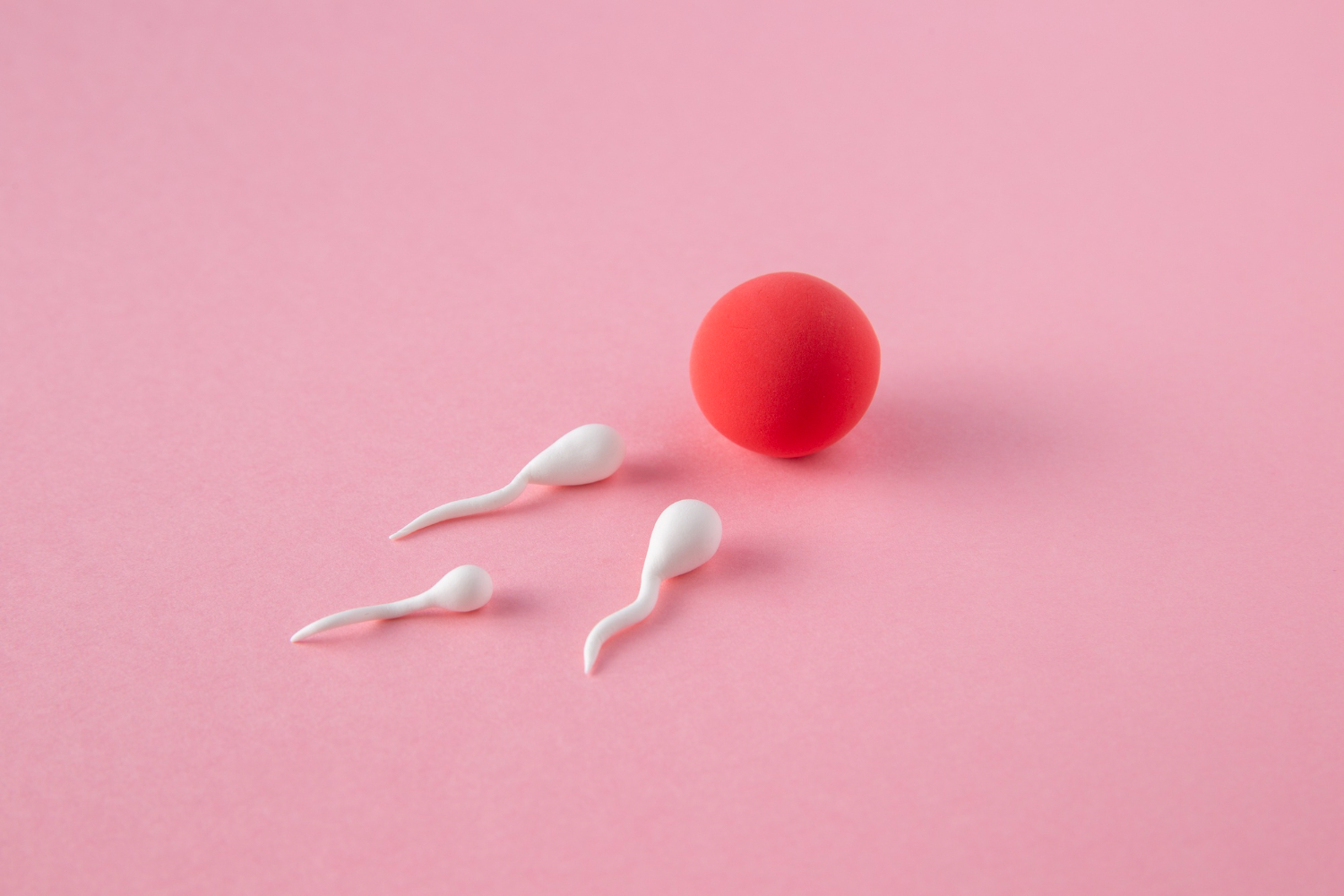The struggle with infertility can be an emotional rollercoaster, and for many couples, understanding the underlying causes is the first step towards treatment and successful conception.
The most common causes of infertility:
Female Infertility
– Ovulation Problems: Irregularities in the menstrual cycle or the absence of ovulation are common causes of female infertility. Polycystic ovary syndrome (PCOS) and ovulatory dysfunction are common examples.
– Endometriosis: This condition occurs when tissue that normally lines the uterus grows outside the uterus. It can cause blockages in the fallopian tubes and affect egg quality.
– Fallopian tube problems: Blockages or damage to the fallopian tubes can make it difficult for the egg to meet the sperm.
– Advanced age: A woman’s age is also a critical factor. Fertility declines with age, especially after the age of 35.
– Uterine problems: Uterine abnormalities, such as polyps or fibroids, can affect implantation of the fertilised egg.
Male Infertility
– Sperm Production Problems: Low sperm production or absence of sperm are common causes of male infertility.
– Motility Problems: Reduced sperm motility makes it difficult for sperm to travel to the egg.
– Genetic abnormalities: Genetic disorders can affect sperm quality and quantity.
– Varicocele: Dilated veins in the scrotum can affect sperm quality and production.
– Infections: Infections in the reproductive tract can damage the vas deferens and affect fertility.
Common Causes for Both Genders
– Lifestyle and Environmental Factors: Stress, obesity, smoking and exposure to environmental toxins can affect fertility in both men and women.
– Hormonal Problems: Hormonal imbalances, such as those associated with the thyroid gland, can affect ovulation and sperm production.
– Chronic diseases: Medical conditions such as diabetes and hypertension can influence fertility.
– Immunological problems: The body’s immune response can affect embryo implantation.
– Psychological Factors: Emotional stress and anxiety can affect fertility in both genders.
It is important to remember that infertility is not a definitive verdict, and many people are able to conceive with the help of appropriate treatment and counselling. Seeking guidance from fertility health professionals is essential.
And here, as in so many other aspects of health, diet also plays a key role in both male and female fertility. By adopting healthy eating habits and ensuring that you get essential nutrients, you can increase your chances of conception.
Some of the essential nutrients for female fertility are:
– Folic acid: is crucial for preventing neural tube defects in the foetus. For women planning to conceive, it is recommended to consume foods rich in folic acid, such as spinach, asparagus and legumes.
– Iron: Iron deficiency can affect ovulation and egg quality. Sources of iron include lean meat, legumes, dried fruits and spinach.
– Omega-3: Omega-3 fatty acids are essential for reproductive health. Fatty fish, walnuts and flaxseeds are excellent sources of these beneficial fatty acids.
– Calcium: Dairy products, broccoli and almonds are rich in calcium, essential for bone health and foetal development.
Some of the key nutrients for male fertility are:
– Zinc: Zinc is essential for sperm production. Foods such as lean meat, nuts and whole grains are rich in zinc.
– Vitamin C: Vitamin C protects sperm from damage and improves sperm motility. Citrus fruits, strawberries and peppers are good sources of vitamin C.
– Vitamin D: Vitamin D is related to sperm quality. Moderate sun exposure and foods such as oily fish and eggs are ways to get vitamin D.
– Selenium: This mineral is essential for sperm motility. Sources of selenium include Brazil nuts, tuna and beef.
General advice:
– Hydration: Staying well hydrated is crucial for overall reproductive health. Water is essential for hormone balance and the production of body fluids.
– Avoid Excess: Excessive caffeine and alcohol consumption can affect fertility. Moderation in the consumption of these substances is recommended.
– Balanced Diet: A balanced diet that includes a variety of foods from all food groups provides essential nutrients necessary for reproductive health.
A Look at the Most Commonly Used Treatments and Their Success Rates
The search for pregnancy can lead many couples to explore different fertility treatment options. As science advances, there are several procedures that offer hope to those facing challenges in conceiving. Some of the most commonly used fertility treatments and their respective success rates.
Artificial Insemination (AI): Artificial insemination involves the controlled introduction of sperm directly into the woman’s uterus during ovulation. This procedure is commonly used in cases of sperm motility problems or to overcome cervical problems. Success rates vary, but are generally between 10% and 20% per cycle.
In Vitro Fertilisation (IVF): IVF is one of the best known and most effective fertility treatments. It involves fertilising eggs with sperm outside the body and transferring the resulting embryo to the uterus. Success rates for IVF vary depending on a number of factors, such as the woman’s age and the quality of the eggs and sperm. On average, success rates can range from 30% to 40% per cycle.
Intracytoplasmic Sperm Injection (ICSI): ICSI is a procedure related to IVF in which a sperm is injected directly into an egg. This method is used when there are fertilisation problems due to poor sperm quality. The success rates of ICSI are comparable to those of IVF, ranging from 30% to 40% per cycle.
Egg and sperm donation: When egg or sperm quality is a challenge, donation may be an option. Success rates in these cases can be higher, exceeding 50% in some cases, depending on the age of the donor and recipient.
In Vitro Fertilisation with Embryo Donation: This approach involves the use of donated embryos for implantation in the recipient woman. Success rates can be significantly high, reaching up to 60% or more, depending on several factors.
Surrogacy: Surrogacy involves another woman carrying and delivering the couple’s baby. Success rates are high, but this process involves additional ethical, legal and emotional considerations.
It is important to note that success rates may vary depending on the fertility clinic, the woman’s age, the cause of infertility and other individual factors. In addition, response to treatments may vary, and some couples may require several attempts before achieving pregnancy.
References:
Pereira Calvo J, Pereira Rodríguez Y, Quirós Figueroa L. Infertility and factors that favour its appearance. Rev. med. sinerg. 2020; 5(5): e485.
Vidal C. Human infertility and infertility. Approach and treatment. Farm. Prof. 2001;15(8):96-101.



